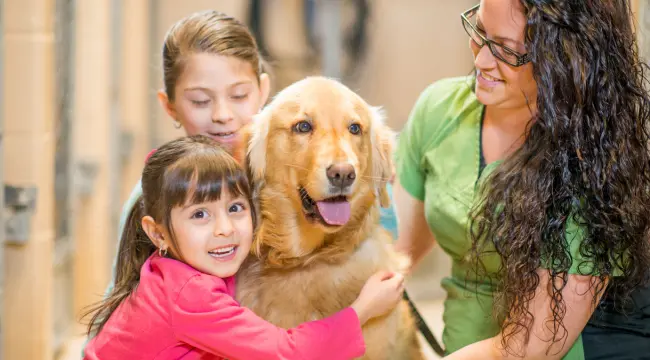
Bringing a new dog into your home is an exciting and heartwarming experience. Some of the best moments in life are when we first meet our pets and when we bring them home through adoption. But before you dive into this journey, it’s important to pause and think carefully. Just like any big decision, adopting a furry friend requires careful thought and preparation beforehand. To make sure you and your new companion start off on the right foot, here are 10 important things to consider before getting a dog home.
1. Assessing Your Readiness for Dog Ownership
Before bringing a new dog home, it’s important to honestly assess your readiness for such a significant commitment. Dogs require consistent love, care, attention, and dedication every day. They rely on us for their basic needs, including food, exercise, grooming, training, and companionship. Your new furry friend will depend on you entirely for their well-being and happiness. It’s crucial to consider the most challenging scenarios. Are you prepared to spend the hours of training required to curb dog aggression if your pup starts displaying behavioral issues?Can you commit to daily walks and exercise routines? If your answer to these questions is no, and you don’t have someone else to help fulfill these responsibilities, it may indicate that you’re not quite ready for dog ownership.
Related Article: 20 Must Know Tips For A First Time Dog Owner
2. Choosing a Dog That Fits Your Lifestyle
Just like people, dogs have their own unique personalities and needs. It’s important to consider how well a dog’s characteristics align with your daily routines and living arrangements. Let’s imagine this scenario: you’re an adventurous, outdoorsy person who loves activities like hiking and jogging, and you enjoy spending weekends exploring nature. Now, picture bringing home a small lap dog that prefers cuddling on the couch instead of joining you on rugged trails. While that fluffy pup might be adorable, it’s crucial to recognize the potential mismatch between your active lifestyle and their more relaxed temperament. Selecting a dog based solely on cuteness can be a big mistake. By choosing a dog that fits your lifestyle, you’ll create a harmonious and fulfilling relationship.
3. Managing Dog Ownership Costs
While the wagging tails and wet kisses of dogs are priceless, it’s important to be aware of the financial commitment that comes with owning a dog. From adoption fees and vaccinations to ongoing expenses like food, grooming, veterinary care, and unexpected medical emergencies, costs can add up over time. Don’t forget to consider additional expenses such as training classes, toys, bedding, and pet insurance. Being prepared for these costs will help prevent financial strain and ensure your furry companion receives the care they need and deserve.
4. Creating a Pet-Friendly Home
Bringing a new dog home is an exciting time filled with the anticipation of playful romps and heartwarming snuggles. However, it’s important to consider the adjustment period and ensure your home is pet-friendly. Just as humans adapt our environment to suit our preferences, our furry companions deserve a safe and welcoming haven tailored to their unique needs.
A pet-friendly home goes beyond simply providing a roof over their heads. It involves creating an environment that promotes both the physical and emotional well-being of your new friend. Dogs, like us, require their own space to relax, exercise, and explore. Designate areas in your home where your dog can have their cozy bed, access to fresh water, and toys to keep them mentally stimulated. If you have a yard, consider installing a secure fence to provide them with a safe and enjoyable outdoor space.
Additionally, be mindful of potential hazards within your home. Remove toxic plants, secure loose electrical cords, and ensure that cleaning products and other harmful substances are stored safely out of reach. Take time to assess any potential escape routes and make sure windows and doors are properly secured.
Creating a pet-friendly home not only ensures your dog’s safety and comfort but also promotes a harmonious living environment for both you and your furry companion. By providing them with a designated space where they can unwind and enjoy their own personal sanctuary, you’re fostering a sense of security and happiness within their new home.
5. Finding the Right Veterinarian
Before deciding on the type of pet that suits your lifestyle, it’s important to seek recommendations and conduct interviews with veterinarians. Your friends who have pets can provide valuable insights into trustworthy veterinary professionals. Choosing the right veterinarian is crucial as they will be your long-term partner in pet care. Not all veterinarians are the same, so finding one that aligns with your needs and preferences is vital.
Start by researching and reading online reviews of veterinarians in your community, but be sure to approach them with a critical eye. You can also ask local groomers for their recommendations since they often work closely with veterinarians. Once you have a shortlist, schedule interviews to meet the veterinarians in person and discuss your concerns and expectations. Remember, it’s not just about their friendliness towards humans; a good veterinarian should have exceptional skills in handling and caring for animals.
Don’t hesitate to ask the veterinarian for references from satisfied clients who can attest to their expertise and quality of care. By following these steps, you’ll find a knowledgeable and reliable veterinarian who will provide the best possible care for your pet’s health and well-being.
6. Selecting the Right Food for Your Pet
When it comes to pet food, not all products are created equal. It’s essential to understand that some brands are better than others, and not all claims on packaging are supported by facts. While it may be tempting to choose pet food based on attractive packaging, this alone won’t guarantee your pet’s long-term health. To ensure their well-being, it’s crucial to make informed decisions and select the best food for your dog or cat.
When choosing pet food, always look for a diet that is labeled as complete and balanced. This indicates that the food meets the necessary nutritional requirements for your pet. Additionally, it’s important to consider your pet’s specific needs, life stage, and lifestyle. Whether they are young, adult, or senior, their food choices should align with their age and any breed-specific considerations.
While you can conduct initial research to gain a basic understanding of the importance of appropriate nutrition and what to look for in pet food, the best advice and guidance can be obtained from your veterinarian. They have in-depth knowledge of your pet’s individual health requirements and can recommend the most suitable food options.
Consulting your veterinarian ensures that you receive personalized recommendations tailored to your pet’s specific needs. They can guide you on choosing the right food brand, ingredients, and feeding guidelines to promote your pet’s overall health and well-being. By prioritizing their nutritional needs and seeking professional advice, you can provide your beloved companion with the best possible diet for a healthy and vibrant life.
7. Preparing for a Smooth Adjustment Period
Welcoming a new pet into your home requires careful preparation to ensure a smooth adjustment period for both you and your furry companion. If you’re adopting a puppy, be prepared for potential crying during the first few nights. While it may be tempting to bring the puppy to your bed for comfort, it’s best to establish a quiet and enclosed space beforehand. Set up a cozy bed or a secure kennel in a designated area, providing a sense of comfort and preventing your puppy from wandering. This space will become their safe haven and a consistent spot they can call their own. During the day, give your puppy supervised freedom to explore and familiarize themselves with the house, which not only allows them to satisfy their curiosity but also helps you identify any potential hazards you may have missed initially.
Creating a bedtime routine for cats is relatively simpler. Set up a secure sleeping area for your kitten close to their litter box to prevent confusion and ensure easy access. Allow them to play and roam within their designated area until they naturally settle down for sleep.
Introducing a new pet to a household with existing pets requires careful management. It’s essential to ensure a positive and peaceful transition for all animals involved. Gradual introductions in controlled environments can help reduce stress and minimize the potential for conflict. Provide separate spaces initially, allowing each pet to become familiar with the scent and presence of the other. This gradual acclimation process allows them to establish a sense of comfort and gradually build positive associations.
By taking proactive steps to create a conducive environment and promote harmonious interactions, you can help your new pet and existing pets form strong bonds and navigate the adjustment period with ease. Patience, understanding, and a structured approach will pave the way for a harmonious and happy coexistence in your home.
Related Post: Should You Wake Your Puppy up to Pee at Night?
8. Mastering Pet Training: Setting the Foundation for a Happy Home
To maintain a harmonious and happy home, it’s essential to prioritize the training of your new pet from the moment they arrive. Whether you’re welcoming a playful kitten or an adorable puppy, immediate housetraining is key. Introduce your kitten to their litterbox right away, and for puppies, leash them up and take them outside to explore their new surroundings. Remember, puppies may feel overwhelmed initially, so keep their first walk brief and gentle. Start incorporating training during this outing, using a consistent command like “Go now” when they relieve themselves outside. With repetition, your pet will learn to associate the command with the desired behavior, making outings more convenient regardless of the weather. By establishing a solid training foundation, you’ll pave the way for a well-adjusted pet and create a happier home environment for both of you.
9. Spaying and Neutering Your Pet
When it comes to the well-being of your furry companion, considering spaying or neutering is a crucial decision. These procedures, typically performed around four to six months of age, offer numerous advantages for your pet’s health and behavior. Despite common misconceptions, spaying or neutering does not diminish their sense of identity or deny them important experiences. In fact, it helps prevent reproductive issues and offers long-term benefits.
Neutering reduces aggression in most cases while preserving your pet’s protective instincts towards your family. For female pets, it significantly reduces the risk of mammary and ovarian cancers, promoting a healthier life. To make an informed decision, consult your veterinarian, who will provide expert guidance tailored to your pet’s specific needs.
By choosing to spay or neuter, you’re taking a proactive step towards ensuring your pet’s well-being and contributing to a healthier pet population. Embrace this responsible choice and give your furry friend the gift of a healthier and happier life.
10. Ensure Your Pet’s Safety: Outfit Your Pet with Proper ID Tags
When it comes to responsible pet ownership, one crucial aspect is outfitting your puppy or kitten with proper identification. This simple yet vital step can significantly increase the chances of your furry friend being safely returned to you in case they ever go missing. Let’s explore some key measures you can take to ensure your pet’s identification is in place.
First and foremost, make sure your pet wears a collar that displays visible contact information. This can be achieved through a tag containing your details or by directly printing the information on the collar itself. Keeping this information up to date is essential, so remember to make necessary changes whenever your contact information changes.
Equally important is maintaining current photos of your pet. These photos not only help you track their growth but also come in handy if you need to create missing posters or share images with local shelters or community groups. Being able to provide clear and recent photos significantly aids in the search and identification process.
While GPS devices attached to collars can offer additional tracking capabilities, it’s crucial to note that they rely on the collar remaining intact. For a more reliable form of identification, consider microchipping your pet. Microchips are small implants placed under the skin and provide a permanent means of identification. They are safe, effective, and greatly increase the chances of a lost pet being reunited with their owner. Remember to register the microchip and keep your contact information up to date with the appropriate microchip registry.
By taking these simple yet significant steps to ensure your pet’s proper identification, you are providing them with an added layer of safety and protection. In the event that they ever become separated from you, a visible ID and microchip can make all the difference in reuniting you with your beloved companion. Stay proactive and keep your pet’s identification up to date for their well-being and your peace of mind.
Conclusion
In conclusion, before bringing a new dog into your home, it is essential to consider several important factors. Assessing your readiness for dog ownership is crucial, as dogs require consistent care and attention. Choosing a dog that fits your lifestyle is important to ensure a harmonious relationship. Managing dog ownership costs and creating a pet-friendly home are vital for your dog’s well-being. Finding the right veterinarian and selecting the appropriate food for your pet are crucial for their health. Preparing for a smooth adjustment period and mastering pet training set the foundation for a happy home. Considering spaying or neutering your pet is a responsible decision that promotes their health. Finally, ensuring your pet’s safety by outfitting them with proper ID tags and microchipping them adds an extra layer of protection. By carefully considering these factors, you can provide a loving and suitable environment for your new furry companion.



